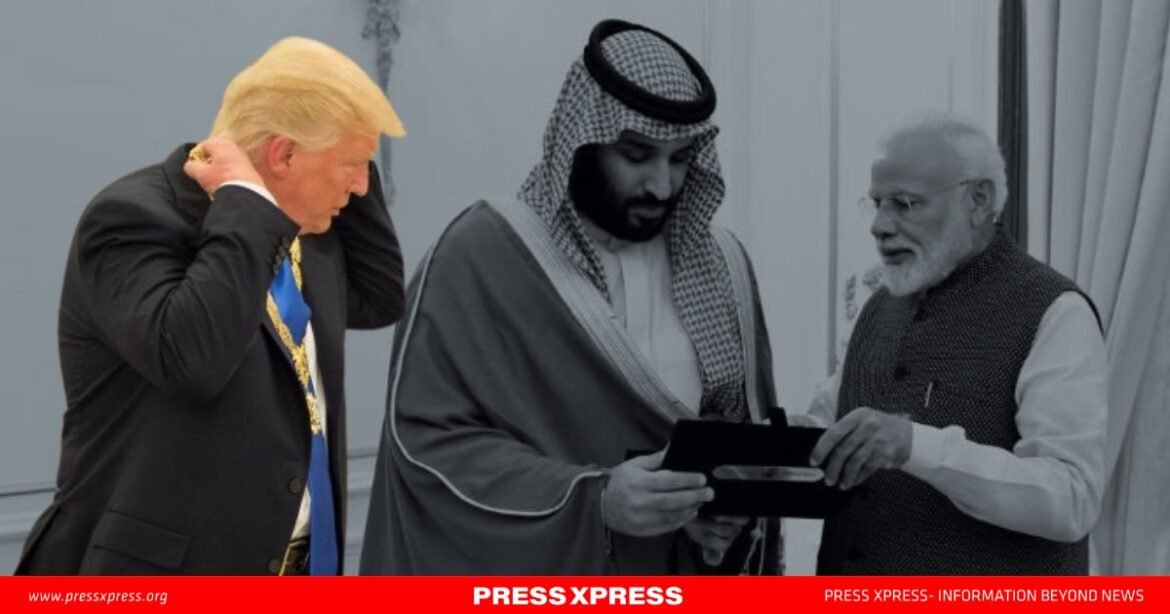In 2025, the United States has strategically reinforced its partnerships with India and Saudi Arabia, two countries that have become linchpins in securing regional stability and promoting global economic prosperity. This renewed focus responds to growing geopolitical challenges posed by China, Russia, Iran, and North Korea, while also opening avenues for deeper economic cooperation. This article explores the evolving U.S. relationships with India and Saudi Arabia, highlighting recent developments, strategic importance, and broader global implications.
India: Asia’s Democratic Powerhouse
India’s significance to U.S. strategic interests cannot be overstated. With a projected GDP growth of 6.2% for 2025, India is poised to become the world’s third-largest economy in the coming decades. Its rapidly expanding technology, manufacturing, and services sectors have attracted significant U.S. investment.
In 2024, bilateral trade between India and the U.S. reached approximately $129 billion, with key areas including information technology, pharmaceuticals, and defense equipment. On the defense front, the U.S. extended an offer of F-35 fighter jets to India, complementing a military budget of $82 billion spent by India in 2024.

Joint military exercises such as the annual ‘Malabar’ drills have grown in scale and complexity. The 2025 edition involved more than 18,000 troops from the U.S., India, Japan, and Australia, strengthening interoperability and showcasing a united front amid regional tensions.
The U.S. also supports India’s aspirations for a permanent seat on the United Nations Security Council, underscoring its belief in India’s leadership role on the global stage.
Saudi Arabia: Keystone of the Middle East
Saudi Arabia plays a central role in Middle Eastern stability and global energy markets. With a GDP of approximately $1.3 trillion in 2024, the Kingdom has made strides in economic diversification, with non-oil sectors now accounting for 54% of its economy and growing at a rate of 4.2%. This shift aligns with Vision 2030, Saudi Arabia’s ambitious reform program.
The Kingdom remains a leading crude oil exporter, supplying about 6.6 million barrels per day in 2024. The U.S. maintains a close security partnership with Saudi Arabia, with arms sales totaling $142 billion in 2025, including cutting-edge Patriot missile defense systems.
Beyond defense, cooperation has expanded to areas such as cybersecurity and counterterrorism. In 2024, joint initiatives reportedly reduced extremist activities in the region by 30%, demonstrating effective collaboration.

Saudi investment in the U.S. continues to diversify, with over $600 billion pledged in 2025, encompassing defense deals, AI initiatives, and capital investments.
Geopolitical and Economic Significance
The U.S. views its partnerships with India and Saudi Arabia as essential to countering the growing influence of China’s Belt and Road Initiative and Russia’s assertiveness. These alliances help stabilize volatile regions in South Asia and the Middle East.
Moreover, the cooperation ensures energy security during a critical phase of global transition toward renewables. Saudi Arabia’s investment of $100 billion in green hydrogen and India’s addition of 40 gigawatts of solar capacity in 2024 exemplify commitments to sustainability.
Multilateral Impact
Both India and Saudi Arabia are influential members of the G20 and have engaged in new groupings such as BRICS, with Saudi Arabia joining in 2024. Their roles in the Organization of Islamic Cooperation and other forums enable them to foster collaboration on global challenges such as climate change and pandemic preparedness.
The U.S. strategic focus on India and Saudi Arabia forms a cornerstone for 21st-century global security and economic growth. Through enhanced military cooperation, expanding trade, and shared geopolitical interests, these partnerships are poised to drive a stable and prosperous international order.


